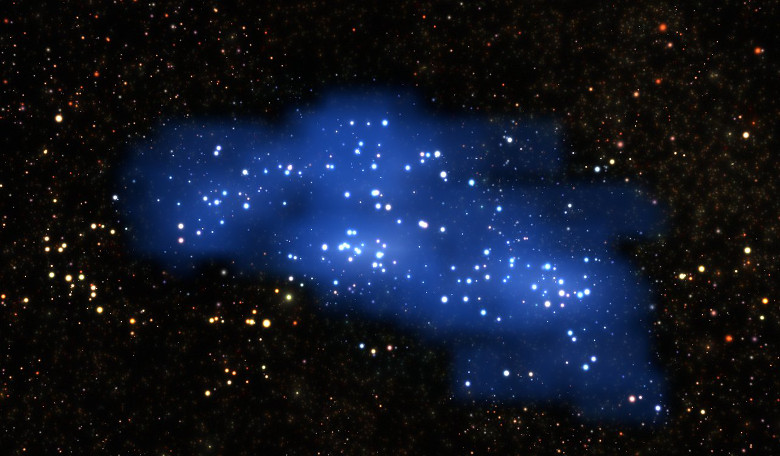A gigantic galaxy proto-supercluster with a mass more than one million billion times that of the Sun, has been found by astronomers just two billion years after the Big Bang. Its overwhelming size has earned it the nickname Hyperion and it is the largest and most massive structure to be found so early in the formation of the Universe.
Despite its colossal size, this behemoth has remained undetected so far due to its youthful age. However, an unprecedented 3D map of the distribution of over 10 000 galaxies provided by the VIMOS Ultra-Deep Survey has helped uncover this super-sized proto-supercluster.
“This is the first time that such a large structure has been identified at such a high redshift,” explained the first author of the discovery paper, Olga Cucciati. “Normally these kinds of structures are known at lower redshifts, which means when the Universe has had much more time to evolve and construct such huge things. It was a surprise to see something this evolved when the Universe was relatively young!”
'Red shift' is a key term in astronomy and is a measure of how much light has literally 'shifted' towards the red part of the spectrum as it travels through the vacuum of space from distant objects. More distant, older objects have a correspondingly larger redshift, leading astronomers to often use redshift and age interchangeably.
Hyperion is not only enormous, but it is also complex. At least seven high-density regions connected by galaxy-sized thread-like formations known as filaments have been identified, again with the help of VIMOS. Short for the Visible Multi-Object Spectrograph this instrument attached to ESO’s Very large Telescope (VLT), records one long stripe (spectrum) for each object to reveal its composition and motion in space.
And because the instrument can take the spectra of hundreds of distant galaxies at the same time, it is ideally placed to show how they formed, grew and evolved over the history of the Universe. Unfortunately however, VIMOS was recently decommissioned. Nonetheless, before it took its last images, archived data from the instrument allowed Cucciati and team to show Hyperion’s loosely strung-together patchwork of dense and massive blobs.
The moniker Hyperion was chosen after a titan from Greek mythology and like this entity that holds them together, these blobs have been assigned similar names, such as Theia, Eos, Selene and Helios. A proto-cluster named Colossus had already been found contained with Hyperion, but at the time astronomers were not aware of its association with the cosmic titan.
Hyperion's configuration is in stark contrast to low redshifted superclusters found closer to Earth, as these tend to have a more concentrated distribution of mass with clear structural features; a difference that is most likely due to age. In a reverse scenario to an ageing human body, Hyperion has yet to mature and let gravity pull matter together into denser regions.
But, given a few more billion years, Hyperion is expected to evolve into something such as the Virgo Supercluster that contains our own galaxy – a super structure that is thought to be a lobe of an even greater supercluster called Laniakea.
“Understanding Hyperion and how it compares to similar recent structures can give insights into how the Universe developed in the past and will evolve into the future, and allows us the opportunity to challenge some models of supercluster formation,” concluded Cucciati. “Unearthing this cosmic titan helps uncover the history of these large-scale structures.”











